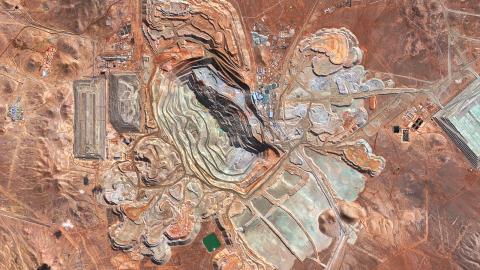In 1932, a man named Pat Clayton—a Irish-born explorer and surveyor—was walking along the endless dunes of the Great Sand Sea between Libya and Egypt when he felt something crunch under his boots. What he had stepped on was a small patch in what turned out to be a vast sheet of glass—what the ancient world had called Libyan glass, created by the impact of a meteor 29 million years ago. It was from this material that Egyptian craftsmen made the scarab-beetle necklace for Tutankhamun’s tomb 500 miles away in the Valley of the Gods.
The transformation of sand into glass—sometimes by humans, sometimes by nature itself—is part of the story that Ed Conway tells in “Material World,” an endlessly fascinating account of the discovery, extraction and processing of six key raw materials. In sheer volume today, the extraction of the most scrutinized of those materials—oil—is dwarfed by the other five: sand, salt, iron, copper and lithium. Taken together, Mr. Conway writes, “it is hard to imagine modern civilisation without them”—or to imagine a foreseeable future in which they will not play a critical role.



















